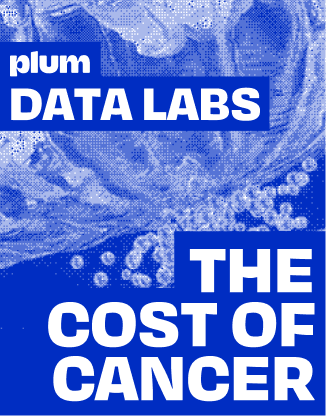A group health insurance (GHI) is a health insurance plan that covers a group of people (and their family members) who work in the same organisation. As we discussed here, GHI is 10X better than individual health insurance. But one of the biggest challenges in setting up GHI is the complexity of the policy. Unlike individual insurance, GHI allows you to customise ~25 terms (aka benefits) in your policy. You must understand these terms and figure out what is best for your team.
If you are setting up GHI at your organisation for the first time, this may seem like a herculean task. And you would eventually end up making the wrong choice, which will negatively impact the experience of your employees.
GMC meaning in insurance – what is it?
In this post, we share with you the four most important decisions you need to take while leaving the rest to the algorithms of Plum. Designing group health insurance is easy.
1. Members covered
GHI allows you to cover not just the employees but their family members. The three most common variants of GHI are:
- E-plan: Covers employees only
- ESC-plan: Covers employees, spouse, and up to 4 dependent children
- ESCP-plan: Covers employees, spouse, up to 4 dependent children, and 2 parents
As discussed here, if you choose to take ESC or ESCP plan, you will have to cover spouses of all married employees, all dependent children, and parents of all employees.
At Plum, we have analysed data from hundreds of organisations. The choice of covered members has the highest impact on the organisation’s premium.
If you choose to move from E-plan to ESC-plan, you can expect to pay anywhere between 20% to 100% additional premium (depending on what % of your employees are married).
If you choose to move from E-plan to ESCP-plan, the premiums become 3X to 4X of the E-plan. That’s because you have now added 2X more lives to the plan (2 parents for every employee), and these parents are in the higher age band (50yrs-70yrs), where the premium-per-life is two to three times of those in the lower age band (18yrs-35yrs).
The choice between E-plan, ESC-plan and ESCP-plan is mainly influenced by how much budget your organisation has for health insurance benefits. That said, few organisations choose not to look at the budget constraints and instead invest in their employee benefits plans.
2. Sum insured
The second most impactful decision is the sum insured (SI), the maximum value for a particular year that the insurance company can pay if you are hospitalised. Organisations can choose a SI of as low as ₹50K or as high as ₹10L (or even more).
Here is a rough breakdown of how your premium may increase as you increase your SI. Assuming the premium for ₹50K SI is ₹100, a premium of ₹10L SI would be ₹513.

As you would notice, it is not a linear relation between SI and Premium. You can increase your SI by 6X from ₹50K to ₹3L by just paying a 2X premium.
At Plum, we recommend you consider two dimensions when deciding the SI: (a) what kind of hospitals your employees visit and (b) the family coverage you provide. E.g., if your employees tend to visit tier-A hospitals (e.g., Manipal, Cloudnine, Apollo), and you are taking an E-plan/ESC-plan, we recommend a SI of between ₹3L to ₹5L. If you are taking an ESCP plan, we recommend a minimum SI of ₹5L. If your employees tend to visit smaller hospitals, you can take a lower SI of ₹1L.
{{group-insurance-quote="/web-library/components"}}
3. Maternity benefits
The third most impactful decision is to choose whether you want to add maternity as an add-on benefit to your GHI benefit. Coverage for maternity means you can claim your expenses related to pregnancy, including hospitalisation, pre-hospitalization and post-hospitalization. The use starts from day one without any waiting period and covers any prenatal and postnatal costs.
Maternity benefit comes with a sub-limit (which is independent of your SI). You can opt for a maternity benefit starting from ₹25,000 to ₹1,00,000.
Adding maternity benefits can increase your premium anywhere between 15% to 30%, depending on the size of your team and the quantum of maternity benefits.
While we recommend that every organisation provides maternity as a benefit to ensure that your employees (both female and male) can have peace of mind at the essential stage of their life, organisations with very young and unmarried employees can postpone this coverage for a while.
4. Pre-existing diseases coverage
The fourth most important decision is to opt for coverage of pre-existing disease (PED). PED means any condition, ailment, injury, illness, or related condition(s) for which the insured had developed signs or symptoms, were diagnosed and received medical advice/treatment within 48 months before the first policy with the company.
Opting for PED coverage can increase your premium by 15% to 25%, depending on the size of your team.
If you have decided to take an ESCP plan, we strongly recommend opting for PED coverage, as parents are most susceptible to having pre-existing conditions. If you accept an E-plan or ESC plan, you can opt out of PED coverage to save some cost.
GHI has 20+ more possible customisations. E.g., room rent limit, disease-wise sub-limit, ambulance cover, floater vs non-floater, corporate floater, waiting periods (four types), baby day one body, and many more.
At Plum, we take away these complexities. All you need to do is decide your family coverage, SI, maternity add-on and PED cover, and leave the rest to us. We ensure that we choose the customisations that provide the best experience to your employees while keeping costs low.
If you are an organisation that hasn’t set up a health cover for your employees, give Plum a shot. We will help you in designing group health insurance at a suitable premium.
To get started, visit and get started with designing group health insurance. Trust us; it takes less than two minutes to share your details. The rest is on us!
{{group-insurance-quote="/web-library/components"}}
FAQ
Q. How do additional benefits impact the premium?
A. Adding benefits to your policy raises the premium. Each customization, like room rent limits or disease sub-limits, affects cost differently. Therefore, carefully select extras to balance coverage and expense.
Q. How do demographics influence premium costs?
A. Premiums vary with age and health of insured individuals. Younger, healthier groups often face lower charges. Older employees or those with chronic conditions might increase premiums. Thus, a diverse workforce requires thoughtful policy design.
Q. What are typical limitations in GHI policies?
A. GHI policies come with specific exclusions. For example, maternity benefits may have caps, and pre-existing conditions could have waiting periods. Understanding these details ensures better decision-making for inclusive coverage.
.avif)










.avif)














